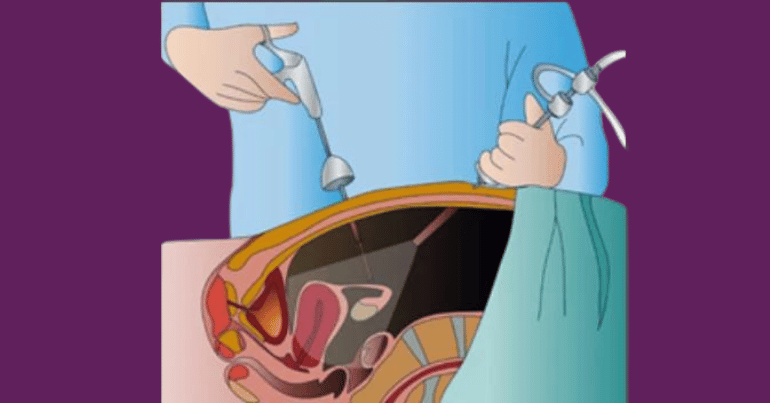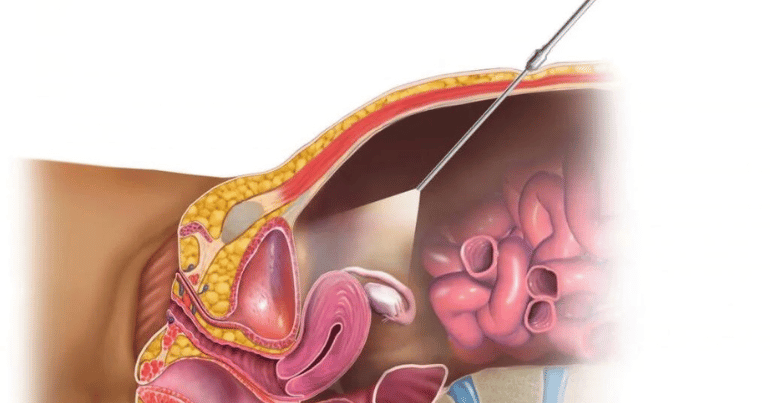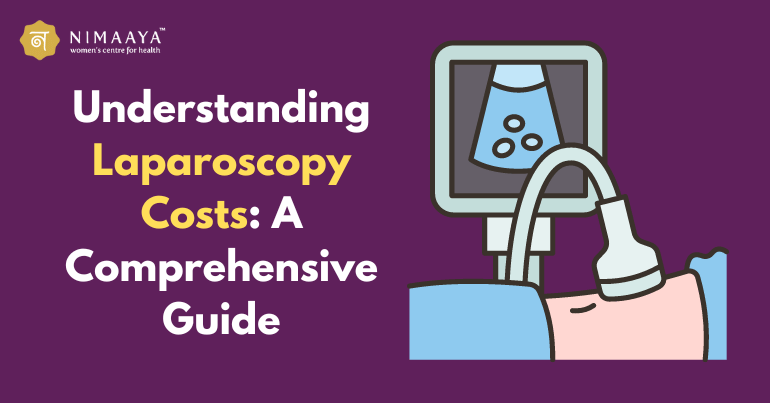Introduction
Laparoscopy is a minimally invasive surgical procedure that has revolutionized the medical field by offering patients a less painful and quicker recovery option compared to traditional open surgeries. However, the cost of laparoscopy can be a significant concern for many individuals considering this procedure. In this comprehensive guide, we will delve into various aspects of laparoscopy cost, including factors that influence pricing, costs associated with different types of laparoscopy, and how to make an informed decision.
What is Laparoscopy?
Laparoscopy also referred to as minimally invasive surgery, involves making small incisions and using a laparoscope to view internal organs. Understanding laparoscopy’s meaning is essential as it is utilized for both diagnostic and surgical purposes. Unlike traditional open surgery, laparoscopy offers numerous benefits such as reduced pain, shorter hospital stays, and quicker recovery periods. These advantages also contribute to the overall laparoscopy cost, which can vary based on the type and complexity of the procedure.
Breakdown of Laparoscopy Costs

When considering a laparoscopic procedure, understanding the associated costs is crucial for effective financial planning and peace of mind. Laparoscopy, a minimally invasive surgical technique, is employed for a variety of medical purposes, ranging from diagnostic evaluations to complex surgeries. The costs of laparoscopy can vary widely, influenced by numerous factors such as the type of procedure, geographical location, and the choice of healthcare facility.
In this section, we will provide a detailed breakdown of laparoscopy cost, exploring different scenarios and key elements that contribute to the overall expense. This comprehensive analysis aims to equip you with the knowledge needed to navigate the financial aspects of laparoscopy with confidence.
1. Laparoscopy for Infertility
Laparoscopy is commonly used to diagnose and treat infertility issues. The laparoscopy for infertility cost includes diagnostic tests, the surgical procedure, and postoperative care. In India, the cost can range from INR 50,000 to INR 1,00,000, depending on the complexity of the case and the hospital chosen.
2. Laparoscopy Family Planning Cost
Laparoscopy is also used for family planning procedures, such as tubal ligation. The laparoscopy family planning cost is relatively lower, ranging from INR 30,000 to INR 60,000. This includes the procedure, anesthesia, and follow-up care.
3. Diagnostic Laparoscopy
Diagnostic laparoscopy is performed to identify the cause of abdominal or pelvic pain. The laparoscopy test cost for diagnostic purposes typically ranges from INR 40,000 to INR 80,000. This includes the cost of the laparoscope, surgical team, anesthesia, and hospital stay.
4. Therapeutic Laparoscopy
Laparoscopic surgery for treating conditions like endometriosis, fibroids, or ectopic pregnancy can be more expensive due to the complexity of the procedure. The laparoscopy surgery cost for these conditions ranges from INR 70,000 to INR 1,50,000.
5. Additional Costs to Consider
Apart from the procedure itself, there are other costs associated with laparoscopy that patients should be aware of:
○ Preoperative Tests:
Blood tests, imaging tests, and consultations before the surgery can add to the overall cost.
○ Hospital Stay:
Although laparoscopy often involves a shorter hospital stay, the cost of hospitalization should be considered.
○ Postoperative Care:
Follow-up visits, medications, and any postoperative complications can incur additional costs.
○ Insurance Coverage:
It’s important to check with your insurance provider regarding coverage for laparoscopic procedures. Some policies may cover the entire procedure, while others may only cover a portion of the costs.
Laparoscopy Cost in India
India is known for its affordable yet high-quality medical care, making it a popular destination for medical tourism. The laparoscopy cost in India is generally lower compared to Western countries. However, the cost can still vary widely depending on the factors mentioned above. On average, diagnostic laparoscopy in India can cost between INR 20,000 to INR 50,000, while surgical laparoscopy might range from INR 50,000 to INR 2,00,000.
Factors Affecting Laparoscopy Cost

The cost of laparoscopy can vary significantly depending on several factors. Here are the primary elements that influence the pricing:
➼ Geographical Location:
The cost of healthcare services varies widely across different regions and countries. For example, laparoscopic surgery cost in india are generally lower than in Western countries due to the lower cost of living and medical expenses.
➼ Type of Procedure:
The specific type of laparoscopy procedure, such as diagnostic or therapeutic, can influence the cost. Procedures addressing infertility, endometriosis, or family planning may have different pricing structures.
➼ Hospital and Clinic:
The hospital or clinic selection mostly determines the cost. Renowned institutions like Nimaaya IVF Center, known for their advanced facilities and expertise, might charge higher fees compared to smaller clinics.
➼ Preoperative and Postoperative Care:
The cost also includes preoperative tests, medications, and postoperative care. Comprehensive care packages may be more expensive but provide better overall outcomes and peace of mind.
➼ Additional Tests and Procedures:
Preoperative and postoperative tests, medications, and any additional procedures required can add to the overall expense.
A Step-by-Step Guide to the Laparoscopy Procedure

1. Preoperative Consultation and Evaluation
Before the laparoscopy procedure, you will have a consultation with your surgeon. During this visit, the surgeon will review your medical history, discuss your symptoms, and explain why laparoscopy is the recommended approach. This step is crucial for assessing your overall health, understanding your specific condition, and preparing you for the procedure. You will also receive detailed instructions about what to do before the surgery, including fasting requirements and medication adjustments.
2. Anesthesia Administration
On the day of the procedure, you will be taken to the operating room where anesthesia will be administered. Typically, general anesthesia is used for laparoscopy, meaning you will be completely unconscious throughout the procedure. The anesthesia team will monitor your vital signs and adjust the medication as needed to ensure your comfort and safety during the operation.
3. Preparation of the Surgical Area
After anesthesia is administered, the surgical team will prepare the area for the procedure. This involves cleaning and sterilizing the abdominal area to reduce the risk of infection. A sterile drape will be placed over you, and the team will ensure that all necessary instruments and equipment are ready for use.
4. Creation of Access Points
The actual procedure of laparoscopy begins with the creation of small incisions in your abdomen. Three or four little incisions are usually made. A needle is first used to introduce carbon dioxide gas into the abdominal cavity, which inflates it slightly to create a clear view of the internal organs. Through one of the incisions, a laparoscope, a thin tube with a camera on the end, is inserted to provide a visual of the abdominal area on a monitor.
5. Introduction of Surgical Instruments
Once the abdominal cavity is inflated and visualized, additional small instruments are inserted through the other incisions. These instruments are used to perform the necessary surgical tasks, such as cutting, cauterizing, or suturing. The laparoscope’s camera allows the surgeon to see and maneuver the instruments with precision.
6. Performing the Surgical Procedure
With the instruments in place, the surgeon will carry out the specific procedures required for your condition. This could involve removing or repairing organs, taking biopsies, or other targeted interventions. The procedure is guided by the images displayed on the monitor, which helps the surgeon to work efficiently and accurately.
7. Completion of the Procedure and Closure
After the necessary surgical tasks are completed, the laparoscope and instruments are carefully removed from your abdomen. The carbon dioxide gas is then released from the cavity. The small incisions are closed using sutures or adhesive strips, and a sterile bandage is applied. The entire process is typically completed within one to two hours, depending on the complexity of the procedure.
8. Postoperative Recovery and Aftercare
Following the procedure, you will be moved to a recovery room where you will be monitored as you wake from anesthesia. You might experience some discomfort or mild pain, which will be managed with prescribed medications. Your healthcare team will provide instructions on postoperative care, including how to manage incisions, dietary recommendations, and when to follow up for a check-up. Most patients can return to their normal activities within a few days, though you will need to follow your surgeon’s guidelines for a safe and effective recovery.
Benefits of Laparoscopy
Laparoscopy offers numerous benefits, making it a preferred choice for many surgical procedures. This minimally invasive technique involves small incisions, which leads to less postoperative pain, reduced scarring, and quicker recovery times compared to traditional open surgery. Patients typically experience shorter hospital stays and can return to their daily activities more rapidly. Laparoscopy also provides surgeons with a clearer view of the internal organs using a high-resolution camera, enhancing precision and accuracy during procedures.
Additionally, the reduced risk of infection and minimal blood loss further contribute to the safety and effectiveness of laparoscopy, making it an advantageous option for diagnosing and treating various medical conditions. Despite the initial laparoscopy cost, the long-term savings and improved quality of life make it a valuable investment in medical care.
Conclusion:-
Understanding the factors that influence laparoscopy cost can help patients make informed decisions about their healthcare. From geographical location and type of procedure to the expertise of the surgeon and the choice of facility, each element plays a crucial role in determining the overall expense. By opting for reputable institutions like Nimaaya IVF Center and skilled professionals such as Dr. Yuvrajsingh Jadeja, patients can ensure they receive the best possible care at a reasonable cost. Whether for family planning, infertility treatment, or other medical needs, laparoscopy offers a safe, effective, and minimally invasive solution.
-:FAQs:-
What should I ask my surgeon about the cost of laparoscopy?
When discussing laparoscopy costs with your surgeon, ask about the breakdown of costs, what is included in the procedure fee, potential additional expenses, and whether there are any financial assistance options available.
How does the cost of diagnostic laparoscopy compare to therapeutic laparoscopy?
Diagnostic laparoscopy, used to explore abdominal or pelvic issues, generally costs between INR 40,000 and INR 80,000. Therapeutic laparoscopy, which involves treating conditions like endometriosis or fibroids, is more complex and can cost between INR 70,000 and INR 1,50,000.
How much does laparoscopy cost for infertility treatment in India?
The cost of laparoscopy for infertility treatment in India typically ranges from INR 50,000 to INR 1,00,000. This price covers diagnostic tests, the procedure itself, and postoperative care.
What is the typical cost range for a laparoscopy family planning procedure?
For family planning procedures such as tubal ligation, the cost typically ranges from INR 30,000 to INR 60,000. This includes the procedure, anesthesia, and follow-up care.
Does insurance cover the cost of laparoscopy procedures?
Insurance coverage for laparoscopy procedures can vary. Some insurance plans may cover the entire cost, while others might only cover a portion. It’s important to check with your insurance provider about what is included in your policy for laparoscopic procedures.
What are the additional costs to consider beyond the laparoscopy procedure itself?
In addition to the procedure itself, you should budget for preoperative tests, hospital stay, postoperative care, and follow-up visits. These costs can add up, so it’s important to factor them into your overall financial planning.
How can I make the laparoscopy procedure more affordable?
To manage costs effectively, consider exploring different hospitals or clinics, asking about payment plans, and checking if there are any discounts or financial assistance programs available. Consulting with a financial advisor at the clinic can also help you explore cost-saving options.

